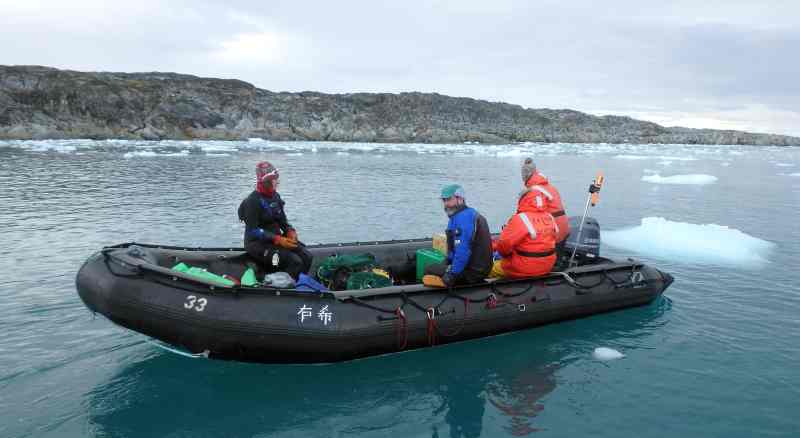
We’ve written a bit in past posts and will a lot more in future ones about the cool things we see when we dive into the very cold water here. Doing those dives includes a well-practiced, tried-and-true set of procedures for getting in and out of the water from/into our inflatable Zodiac boat.
I concluded my last post on getting ready to dive with us leaving the floating dock and a photo thereof. Maggie snapped the photo above just moments later after we were away from the dock. About that time Jim would have been radioing station in an exchange that went something very much like this:
Palmer Station, Palmer Station, Divers. – Go ahead Divers. – Palmer, Divers, we are leaving Station in boat 5 with four on board heading to Norsel Point. – Copy that, four in boat 5 heading to Norsel at 09:30. (Boat 5 is for the number of our automated tracking beacon – the cylindrical orange thing on a post at the stern – not the number painted on the boat itself.)
When we arrive at the intended dive site we do a reconnaissance to make sure that conditions are appropriate for us to do the dive there. If not, we have back-up plans and head elsewhere.
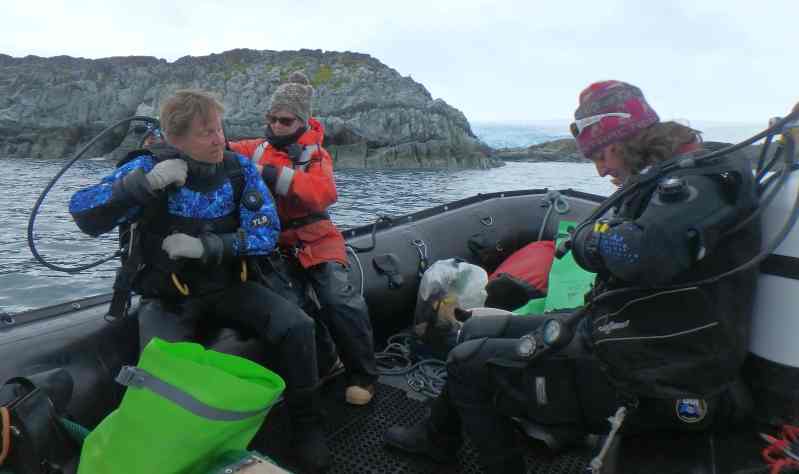
Once we are comfortable with the conditions at the dive site, the dive tenders start helping the divers get into their gear. Above you see CJ helping Maggie into her tank while Sabrina is hooking up the hose that will allow her to add air to her drysuit when she is underwater.
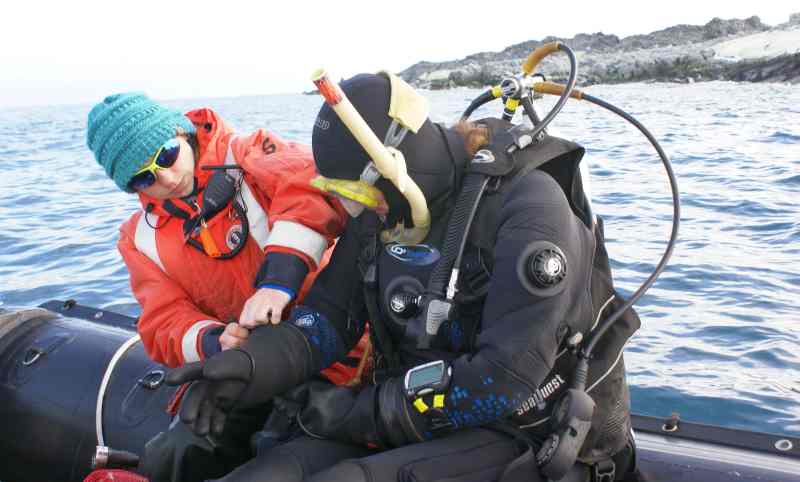
One thing that no one can completely do by themselves is put on their drysuit gloves. The gloves we use are actually electrical worker linesman’s gloves (rated to 1000 volts). Of course we are not handling high voltage (or low voltage!) wires but the same qualities that make them safe for that help keep our hands dry – and therefore with our thick insulated under-gloves, warm – on our dives. What you see above is Michelle pulling Sabrina’s glove over rings on the cuff of her drysuit to seal it. You can also see a large rubber o-ring above Sabrina’s fingers that Michelle will pull up over the cuff ring after the glove is on to help secure it in place.
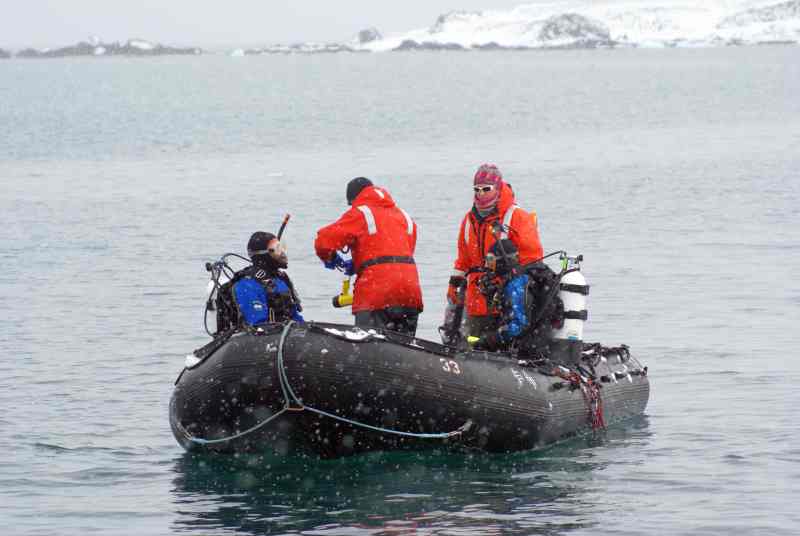
Soon the divers have all their gear on and the tenders hand them their collecting bags and other gear that will be needed for the dive, as you see Andrew doing above in handing me a dive light for a dive I did with Maggie this afternoon (Sabrina is at the helm). Then we slowly approach the spot where the divers want to be put into the water. In some places where we have been many times before, we may know the exact put-in location based just on features of the adjoining shoreline. Many times though, even at sites we have been to before, we use a depth sounder mounted on the boat to help us determine the appropriate spot for the divers to go in.
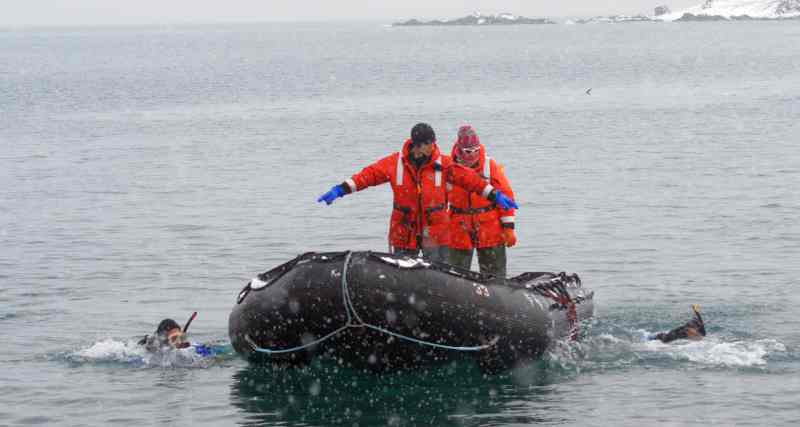
When we are at that spot, the boat driver usually puts the boat briefly into reverse to slow forward motion and then puts the engine into neutral so that the propeller is not spinning. Then she, as Sabrina would have done just moments before the picture above, yells “NEUTRAL” which is the cue to the divers to go into the water. The other tender points to both divers, as Andrew demonstrates above, so that the boat driver knows where they are and so that the divers can tell how the boat is moving in the wind relative to them. Someone, either one of the tenders or divers, will make a determination based on that of whether the divers will meet at the bow or stern of the boat and call it out. If the determination is made by a diver, the tenders relay that to the diver on the other side of the boat.
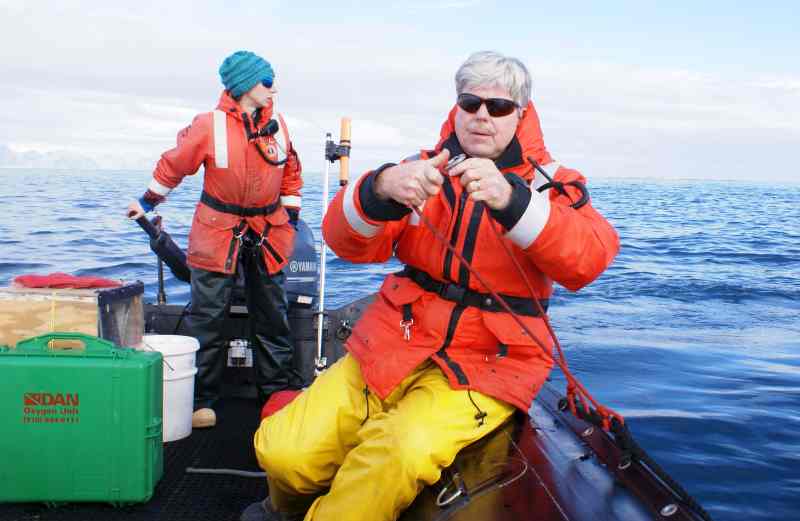
As soon as the divers have left the surface, one tender radios station to relay that divers are in the water. Then while the driver keeps a keen eye on the divers’ bubbles as you see Michelle doing above, the other tender puts down red ropes that have carabineers or large loops on the end as you see Jim doing. From then on, they continue to keep a close eye on the bubbles and follow the divers around until they see that the divers are starting to ascend back to the surface at the end of their dive.
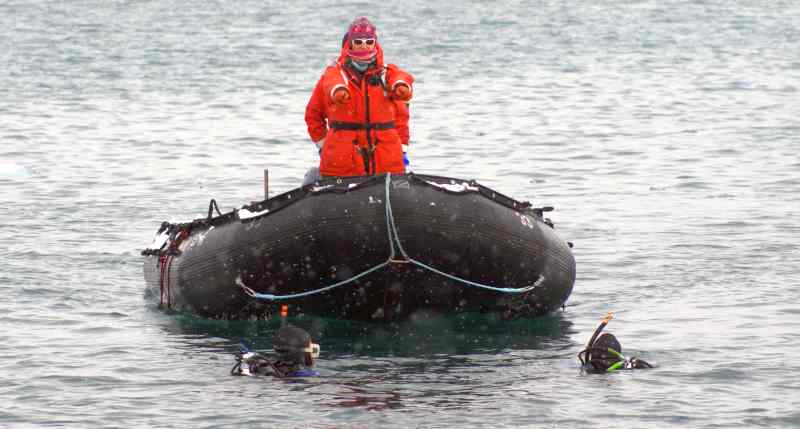
When the tenders see the divers approaching the surface, they back the boat off a bit, say 10 to 20 yards away, until the divers are on the surface. Then they very slowly approach the divers with the non-driving tender pointing to the divers so the driver can tell exactly where they are. That’s what Sabrina doing in the photo above.
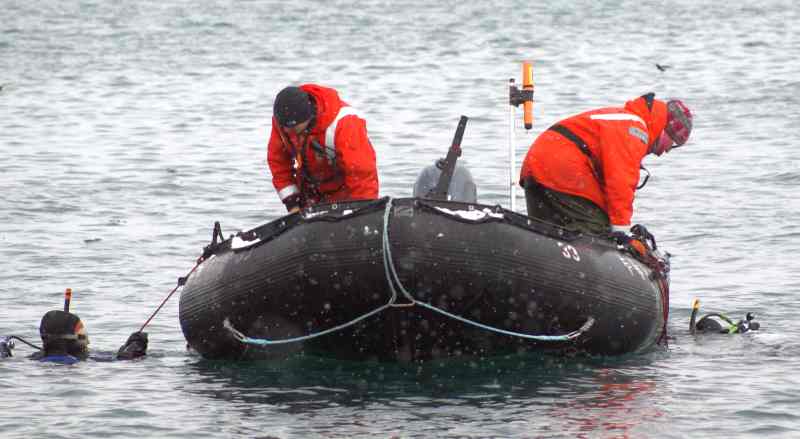
When the boat is just about to the divers, the driver puts the motor back into neutral and again yells “NEUTRAL” so that the divers know it is safe to approach the boat. Then they use those red ropes to attach their tank assembly (tank, regulator, and buoyancy compensator vest) and weight belt harness to the boat as Maggie and I are doing in the photo.
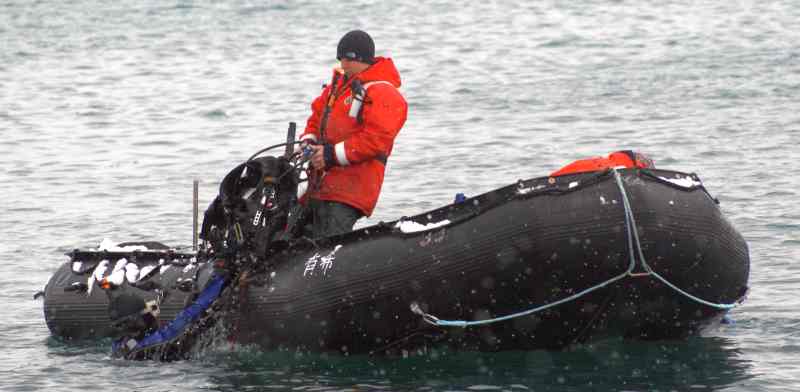
After each of these two items are attached to the boat and the diver frees him/herself from them, the tender pulls them into the boat while the diver helps by pushing them up from below. Above you see Andrew pulling in my tank assembly with me helping by pushing up on the tank.
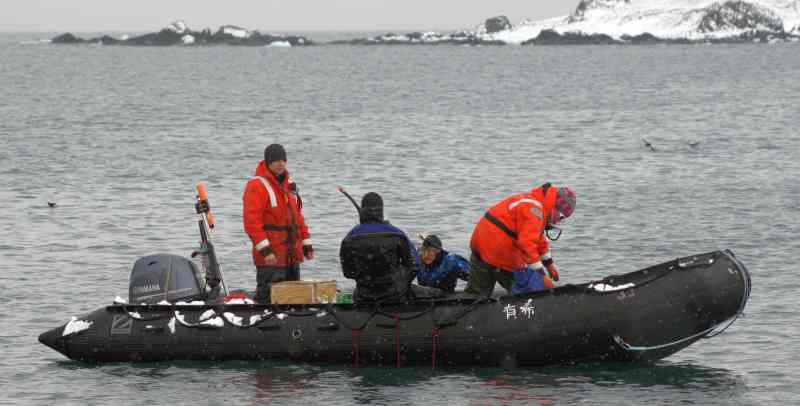
Once free of all that gear, it is relatively easy for the diver with fins on to kick and pull themselves up into the boat as Maggie is doing in the photo above. Soon we are headed back to station where our other team members meet us at the floating dock to help unload our gear and collections. Another successful Antarctic research dive is in the books!